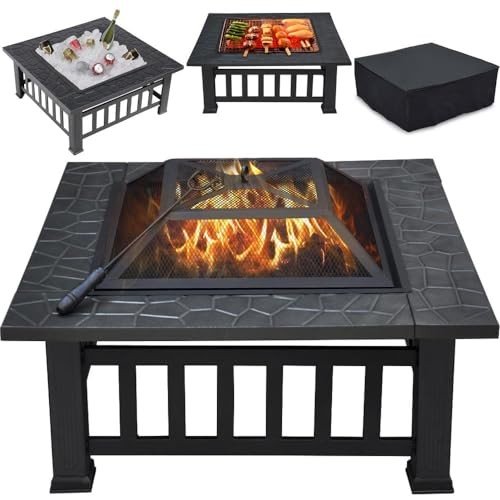A Comprehensive Guide to Small Fireplaces: Efficient Heating and Cozy Living
In an age where energy effectiveness and space optimization are ending up being progressively crucial, small fireplaces have become an enticing alternative to traditional, large hearths. These compact heating options use warmth and a centerpiece for any space, increasing both comfort and aesthetic appeal. This post checks out the different kinds of small fireplaces, their advantages, setup factors to consider, and maintenance tips, eventually assisting homeowners make informed choices when considering these lovely heating alternatives.
Comprehending Small Fireplaces
Small fireplaces provide a range of styles, including electric, gas, ethanol, and wood-burning models. Each type provides distinct advantages and style possibilities, making them ideal for different living areas.
Kinds Of Small Fireplaces
| Fireplace Type | Description | Pros | Cons |
|---|---|---|---|
| Electric | Utilizes electricity to create heat. Offers numerous designs, consisting of wall-mounted and freestanding systems. | - Easy to set up - Low maintenance - No venting needed | - Limited heat output - May sustain greater electrical energy costs |
| Gas | Burns gas or gas. Often available as logs in a traditional fireplace or modern designs. | - Efficient heat output - Cleaner than wood - Easy ignition | - Requires gas line installation - Some systems require venting |
| Ethanol | Burns bioethanol, offering real flames without a chimney. | - Eco-friendly - Portable - No installation required | - Limited heat output - Higher fuel expenses |
| Wood-Burning | Traditional fireplaces that burn firewood. Typically utilized in more rustic settings. | - Great heat output - Rich atmosphere - Can be utilized throughout power outages | - Requires a chimney - Regular maintenance and cleaning |
Benefits of Small Fireplaces
- Space Efficiency: Small fireplaces are ideal for homes, condos, and smaller homes. They optimize heat without using up extreme floor space.
- Economical Heating: In particular cases, small fireplaces can supplement main heater, reducing general energy expenses while creating a more comfortable environment.
- Atmosphere and Aesthetics: They offer an inviting focal point to a room, developing a cozy environment best for relaxation and celebrations.
- Flexibility: Available in various designs and styles, small fireplaces can match any decoration, from modern minimalist to rustic traditional.
Setup Considerations
When contemplating a small fireplace, setup is a vital element that can impact the choice of model. Below are helpful considerations:
- Local Regulations: Building codes can vary by place; constantly check regional standards before setup.
- Ventilation Needs: Depending on the type, small fireplaces may need various ventilation systems. Gas fireplaces might require venting outdoors, while electric models do not.
- Source of power: Electric designs require distance to electrical outlets, while gas and ethanol designs may need a gas line or fuel storage.
- Weight and Structure: Installing wall-mounted systems might require enhanced wall areas, whereas free-standing designs are much easier to relocate.
Upkeep Tips
Like any other home device, small fireplaces need routine upkeep to function efficiently and safely. Here are important upkeep suggestions for numerous fireplace types:
For Electric Fireplaces:
- Cleaning: Wipe down the unit with a soft fabric to eliminate dust and keep the heater ducts clear.
- Evaluation: Check the power cord routinely for any damages or signs of wear.
For Gas Fireplaces:
- Annual Inspections: Schedule annual inspections by an expert to ensure safe gas circulation.
- Clean the Logs: Regularly tidy the burner and logs to keep optimum performance.
For Ethanol Fireplaces:
- Fuel Storage: Store ethanol fuel securely away from direct sunshine and heat sources.
- Regular Cleaning: Clean the burner after each use to preserve effectiveness and prevent soot accumulation.
For Wood-Burning Fireplaces:
- Chimney Sweeping: Have the chimney expertly cleaned once a year to prevent creosote buildup.
- Fire wood Storage: Only usage dry, experienced wood to lessen smoke and promote efficient burning.
Often Asked Questions
1. Can I install a small fireplace myself?
While some electric and ethanol fireplaces are fairly easy to install, it is suggested to hire a professional for gas and wood-burning units to make sure compliance with regional building codes.
2. How much does it cost to run a small fireplace?
The expense will vary depending on the type of fireplace. Typically, electric fireplaces might sustain higher electrical power costs, while wood-burning choices can draw from eco-friendly firewood supplies.
3. Do I need a permit for installation?
Permits are usually required for gas and wood-burning fireplaces due to their installation intricacy and safety policies. Always consult local authorities.
4. For how long can Buy Fireplace run an electric fireplace?
A lot of electric fireplaces can run for extended periods; however, it's suggested to follow maker guidelines to prevent overheating or harming the unit.
5. What type of small fireplace is best for a small space?
This mostly depends on specific requirements. Electric models are versatile and simple to set up, while gas and ethanol options offer real flames with efficient heat output.
Small fireplaces represent a functional and stylish option for those looking for effective heating services in compact home. With numerous types offered, house owners can choose models that line up with their visual choices and space requirements. By understanding the setup procedures and regular maintenance required, people can enjoy the convenience and atmosphere that small fireplaces use for many years to come. Whether for a cozy night at home or an inviting space for gatherings, small fireplaces are a long-lasting element of modern and traditional decor alike.

